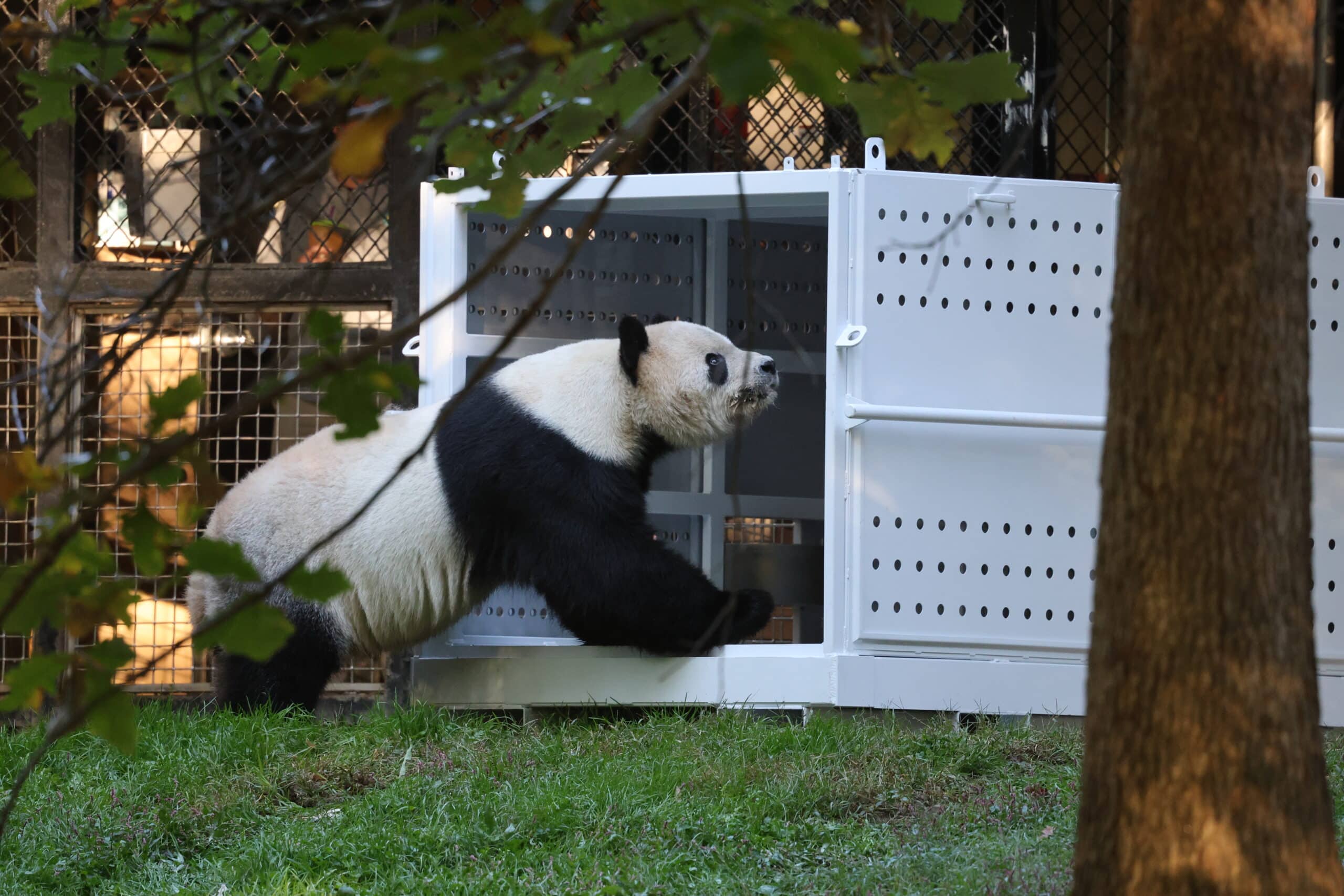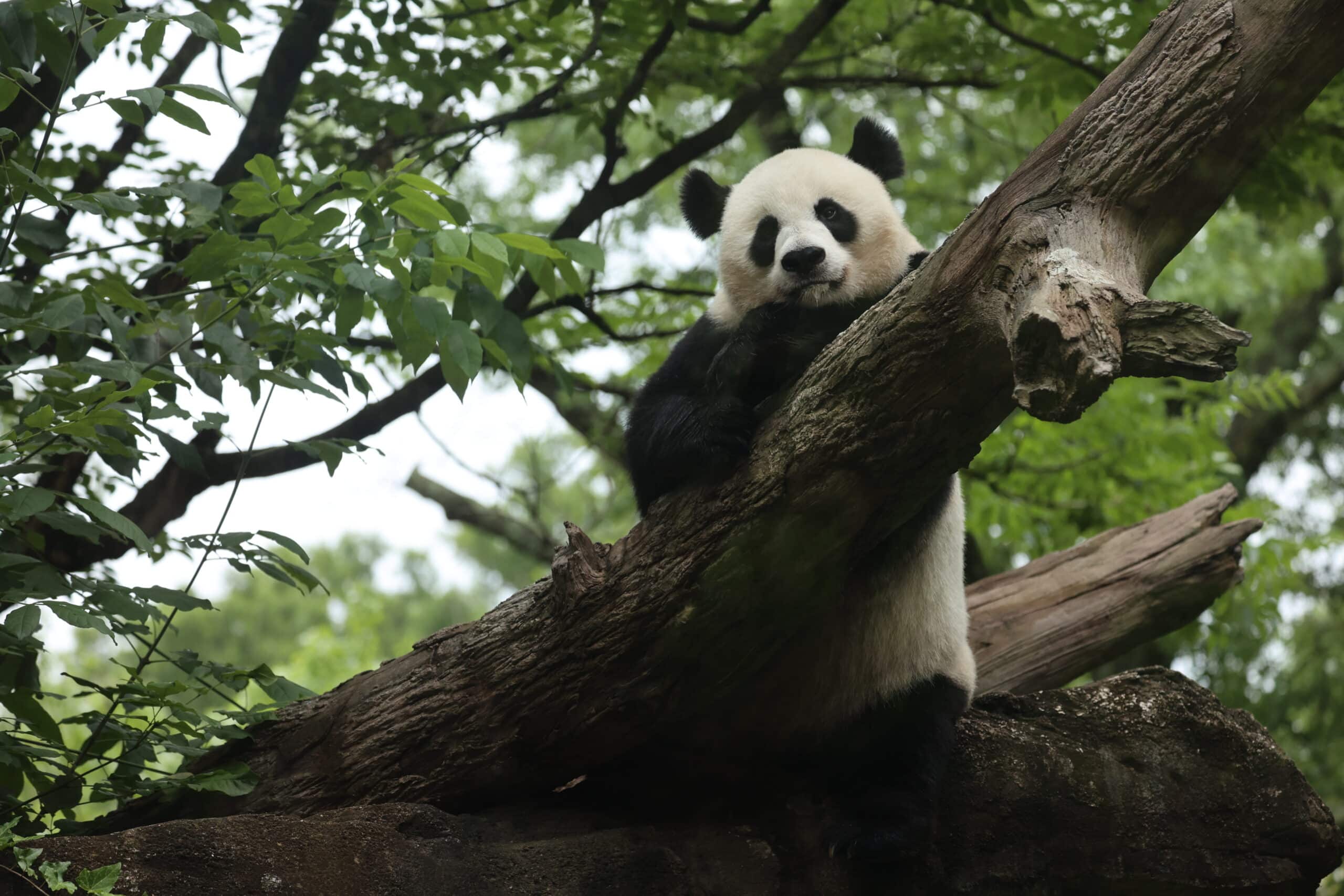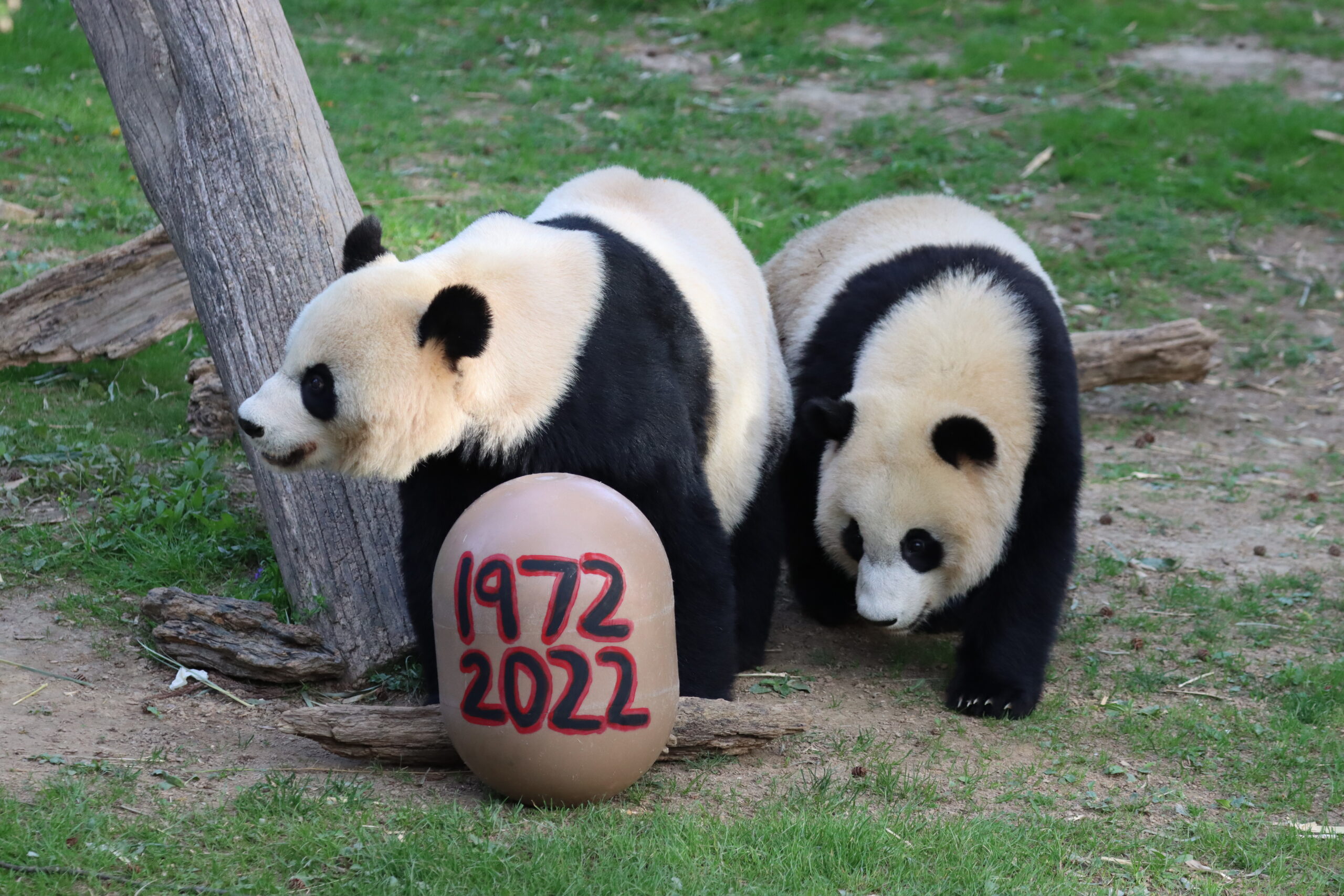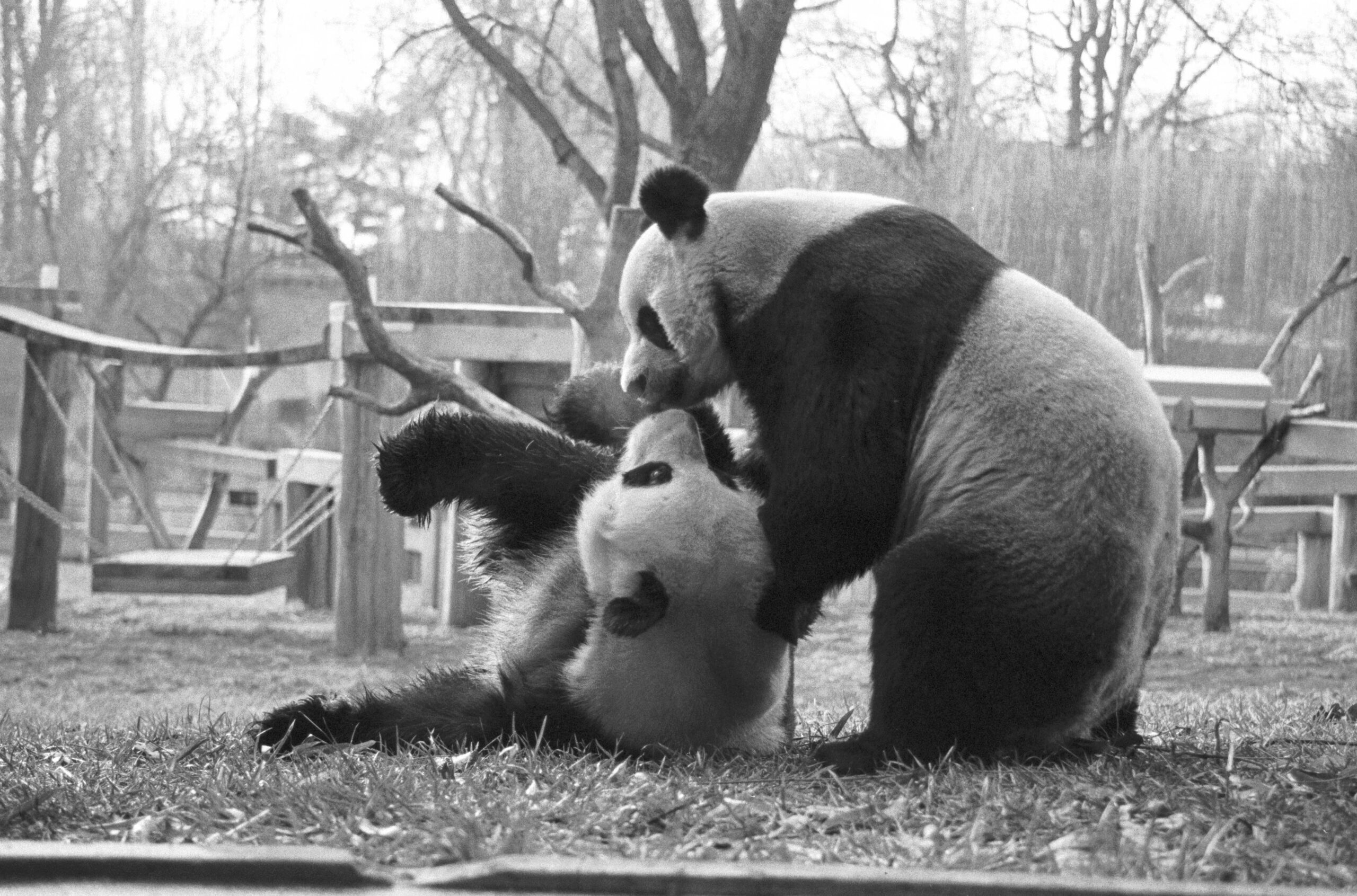Mei Xiang gives birth to a cub @ National Zoo

Mei Xiang gave birth to a cub at the Smithsonian’s National Zoo in Washington D.C. on August 23, 2013. The panda team heard the cub vocalize and glimpsed the cub for the first time briefly immediately after the birth. Mei Xiang picked the cub up immediately and began cradling and caring for it.
Behavior watchers have been monitoring her 24 hours a day since Aug. 7 via the panda cams. The panda team began preparing for a birth when they saw her water break around 3:36 p.m. and she began having contractions. Mei Xiang started spending extended amounts of time body licking and cradling her toys Aug. 11, all signs that she could give birth.
For the first time this year scientists used another test developed by the Memphis Zoo which analyzed Mei Xiang’s levels of prostaglandin metabolite (a fatty acid) to narrow the window when she would give birth or experience a pseudopregnancy. Scientists at the Memphis Zoo performed the analysis and determined that if Mei Xiang were pregnant she would likely give birth during the last week of August. If she were not, her pseudopregnancy would have likely ended in early September.
“I’m glued to the new panda cams and thrilled to hear the squeals, which appear healthy, of our newborn cub,” said Dennis Kelly, director of the Smithsonian’s National Zoo. “Our expansive panda team has worked tirelessly analyzing hormones and behavior since March, and as a result of their expertise and our collaboration with scientists from around the world we are celebrating this birth.”
Keepers and veterinarians will perform a preliminary health exam on the cub within the next 48 hours. Li Guo, lead giant panda keeper at the China Conservation and Research Center for the Giant Panda in Wolong, is at the National Zoo supporting the giant panda keepers. Li and the Zoo’s panda team will perform health checks every few days during the next week. The panda cams will be briefly turned off when the team performs the health checks.
National Zoo scientists detected a secondary rise in Mei Xiang’s urinary progesterone July 10. The rise indicated that she would either have a cub or experience the end of a pseudopregnancy within 40 to 55 days. In the weeks since, keepers and veterinarians have monitored Mei Xiang closely. She has exhibited behavior consistent with a pregnancy or pseudopregnancy since the end of July. Her appetite has been steadily decreasing, and during the past few weeks she has spent significantly more time in her den. Veterinarians had been attempting regular ultrasounds to monitor changes in her reproductive tract and look for evidence of a fetus since late June, but Mei Xiang chose to stop participating in them several weeks ago. The only definitive way to determine if a female is pregnant before she gives birth to a cub is to detect a fetus on an ultrasound. Mei Xiang’s last ultrasound was August 5, during which veterinarians saw no evidence of a fetus.
Mei Xiang was artificially inseminated twice March 30 after natural breeding attempts with the Zoo’s male giant panda, Tian Tian, were unsuccessful. A team of Zoo scientists and veterinarians, including Tang Chunxiang, the assistant director and chief veterinarian of the China Conservation and Research Center for the Giant Panda at Wolong, performed the artificial inseminations. During the first procedure she was artificially inseminated with a combination of fresh semen collected from Tian Tian and frozen semen collected from Tian Tian in 2003. The second procedure was performed with frozen semen collected from Tian Tian in 2003 and frozen semen collected from the San Diego Zoo’s male giant panda, Gao Gao, in 2003. National Zoo scientists will perform a paternity analysis in the coming weeks to determine which male sired the cub. This is Mei Xiang’s third cub born as the result of an artificial insemination.
The panda team expects Mei Xiang to spend almost all of her time in her den for the next two weeks with her newborn cub. The David M. Rubenstein Family Giant Panda Habitat has been closed to the public since August 2, and will remain closed until further notice to provide quiet for Mei Xiang and her cub. Both will be visible on the panda cam. Visitors can see Tian Tian in his outdoor habitat and on the panda cam.
Mei Xiang gave birth to her first cub, Tai Shan, July 9, 2005. Tai Shan was born as a result of artificial insemination and now lives at the Panda Base in BiFengxia in Ya’an, China. Mei Xiang gave birth to her second cub born as the result of an artificial insemination September 16, 2012. Six days after her birth, the giant panda cub died from liver damage caused by underdeveloped lungs.
Source: National Zoo









